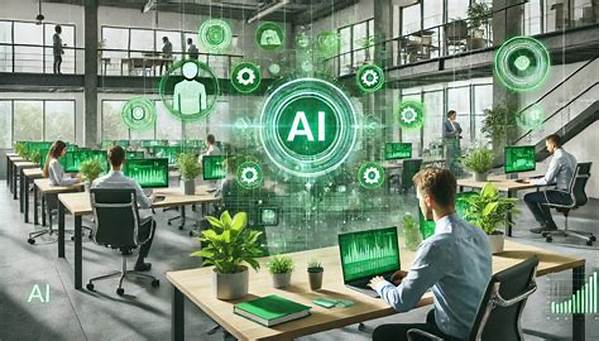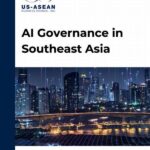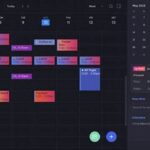- Revolutionizing the Office: AI at Work
- Purpose and Potential of AI in the Workplace
- The Road to Smart Workplaces
- Balancing Act: AI Integration in Businesses
- Purpose Driven: Enhancing AI’s Presence in Workplaces
- The Creative Catalyst: AI’s Impact on Work Dynamics
- H3: The Partnership Between AI and Human Ingenuity
- Objectives for Embracing AI’s Future in the Workplace
- Embracing the Future: AI’s Role in Workplace Dynamics
- H2: Navigating the Ethical Landscape in AI Integration
- Key Concepts of AI Innovation in the Workplace
- Conclusion: Charting the Course for AI and Innovation
In a world where technology seems to grow faster than viral TikTok dances, the future of AI in workplace innovation is not just approaching—it’s here, knocking on the door like an Amazon delivery. Imagine this: an intelligent assistant that not only sets your meetings, but anticipates your needs, just like a best friend who remembers you like your coffee with two sugars whenever you’re stressed before a big presentation. AI is not some sci-fi fantasy or a robot uprising from your favorite Netflix series; it’s the tool that’s transforming how businesses operate, creating a smarter, more efficient future.
Read More : The Future Of Ai-powered Personal Productivity
Traditionally, workplaces revolved around human capabilities—where deadlines met intense brainstorming sessions over too much coffee, and manual data entry was a routine affair. However, with the advent of AI, the dynamics are shifting dramatically, like the plot twists in a well-written thriller. AI’s role is to enhance, not replace; to transform mundane, repetitive tasks into automated processes, allowing the human workforce to focus on creativity and strategy. This isn’t just about saving time, but about fostering innovation and enabling companies to leap ahead of their competition. It’s about coupling human intuition with machine precision—tapping into insights that humans alone might miss, like finding an Easter egg in a blockbuster movie.
So, what is the future of AI in workplace innovation? It’s a question of balancing pragmatism with imagination, efficiency with empathy, and automation with creativity. AI is the secret sauce that can turn a great idea into a groundbreaking one, mix spontaneity with data-driven decisions. As businesses venture deeper into the fourth industrial revolution, AI stands as the torchbearer lighting the path towards unprecedented workplace transformations. Imagine walking into an office where robots are part of the team, not just in sci-fi but in real life scenarios where they work hand-in-hand with humans. Will they tell jokes? Maybe. But more importantly, they’ll streamline operations and open the door to innovations we haven’t even dreamed of yet.
Revolutionizing the Office: AI at Work
As we dive into the ocean of technological advancement, we find that the future of AI in workplace innovation is a tidal wave of potential ready to sweep us off our feet. Just like that awe-inspiring moment when you finally grasp the magic trick happening right before your eyes, AI brings the magic of efficiency and creativity to our work lives. But it’s not just on the horizon; it’s already here, evolving, reshaping, and impacting every facet of the workplace.
—
Purpose and Potential of AI in the Workplace
The evolution of AI has long fascinated thinkers, scientists, and business moguls alike. The future of AI in workplace innovation seeks not only to redefine productivity but to funnel untapped potential into real-world progress. By integrating AI into workplace processes, we aim to unlock a treasure chest of possibilities that can propel us into new realms of productivity. No longer will teams be shackled by the mundane; basic tasks will be robotized to allow human creativity to blossom. This cutting-edge approach is making its mark across various industries, showing us that AI is more than a futuristic concept—it’s a present reality.
The promise of AI is like a suspenseful novel, full of exciting potential yet waiting for each page to unfold before our eyes. With AI, workplaces are becoming arenas of ambition and realization. Small enterprises, armed with AI’s analytical abilities, now compete with industry giants, creating a level playing field that stimulates innovation across sectors. Imagine a workplace where AI elevates the human element, setting the scene for collaboration between mind and machine. This symbiotic relationship is the golden ticket to overcoming today’s work-related challenges and conquering tomorrow’s innovations.
The Road to Smart Workplaces
The journey toward smart workplaces isn’t without challenges, but the rewards are plenty. AI stands at the forefront of this transition, reducing operational setbacks and spearheading solutions with accuracy and minimal error margins. Picture AI-driven predictive analytics estimating market trends that could heavily impact next season’s strategy, or machine learning models that comprehend customer sentiment better than ever before. Here lies the ability to turn complex business decisions into manageable, actionable steps.
Across the board, the merging of AI in corporate environments is driven by a motivational force: competition. Every enterprise is sprinting toward the integration of AI, not just as an option but as a necessity to thrive. The work culture of tomorrow will witness AI platforms fostering more engaging and transparent communication among teams, creating workspaces where inefficiencies are identified and overcome at lightning speed. The enthusiasm for innovation is here; it’s electric and contagious—like catching the first winds of an adventurous sail.
Balancing Act: AI Integration in Businesses
We stand at a precipice where the blend of human intellect and automated efficiency is undeniable. Yet, with power comes responsibility. AI must be wielded wisely, ensuring ethical considerations in applications and data privacy. Businesses should embrace AI—and its benefits—by implementing it thoughtfully, committing to transparency, and maintaining consumer trust while capitalizing on the myriad opportunities that AI brings to the forefront.
The future of AI in workplace innovation holds immense promise and potential that extends far beyond automating the simple tasks. It is the key to redefining efficiency across the industry’s landscape. AI adoption, when executed with a clear vision and ample strategy, represents a thriving industry wielding the tools of tomorrow. This transformation marks a significant shift in how we face challenges, nurture ideas, and ultimately redefine success on our terms.
—
Purpose Driven: Enhancing AI’s Presence in Workplaces
As the corporate realm evolves around us, the future of AI in workplace innovation continues to emerge as a critical facet of this evolution. AI’s purpose-driven integration in workplace settings is nothing short of revolutionary. Let us delve deeper into how this transformation ushers us into a new era. With AI on the front lines, traditional workplace narratives begin to reimagine a better, smarter way of working.
Artificial Intelligence isn’t just a new addition to our arsenal; it’s the catalyst redefining job roles and enriching workplace culture. Employees, now free from monotonous tasks, have the opportunity to rediscover creativity at work. They can pivot from routine analysis to evolving strategies, reinforcing the idea that AI serves to enhance human capacity, not diminish it. The scope of AI is broad—it adapts as an agile aide, showcasing excellent speed and accuracy. However, it achieves true greatness by augmenting human capabilities, allowing individuals to focus on tasks that require emotional intelligence, nuanced understanding, and creative innovation.
The Creative Catalyst: AI’s Impact on Work Dynamics
AI’s incursion into the workplace scenario acts as a creative catalyst, inspiring new ways of thinking and working. It alters the dynamics between operations, strategy, and innovation to offer a fresh approach. Imagine a digital assistant so adept that it anticipates challenges before they impact workflows, thus saving countless hours and providing human colleagues the bandwidth to focus on creative problem-solving. It’s this precise synergy—that of AI forging new capabilities within traditional work spaces—that nurtures the fertile ground for future innovations.
While opportunities abound, the path to successful AI integration must navigate obstacles such as workforce adaptation and ethical concerns. Interactive platforms powered by AI must be oriented to highlight transparency and inclusivity in their function. Organizations must commit to a detailed roadmap that includes comprehensive employee training, policy adherence, and thoughtful job restructuring to make room for AI.
H3: The Partnership Between AI and Human Ingenuity
AI is set to redefine the paradigms within which businesses operate. The narrative is no longer about AI working independently but as an essential collaborator with human ingenuity. It encourages organizations to rethink their strategies and harness AI’s capabilities effectively while retaining what makes us human. This partnership paves the way to unlock a cornucopia of potential where imagination, empathy, and creativity thrive alongside technological advancement.
The collaborative efforts between AI and human intellect ironically preserve tradition even as they break new ground, making workplace environments ripe for innovation. At the heart of AI integration lies the profound understanding that, while machines emulate cognitive functions, it is the human element that infuses jobs with purpose, emotional intelligence, and strategic foresight. Riding the wave of AI-driven transformation, the workplace as we know it is undergoing a thrilling change, enticing us to board the innovation express and witness industries transform from within.
—
Objectives for Embracing AI’s Future in the Workplace
—
Embracing the Future: AI’s Role in Workplace Dynamics
The futuristic vision of workplaces driven by AI isn’t about robots taking over but about bridging possibilities and practicality. The future of AI in workplace innovation holds immense promise, acting as a catalyst in reshaping business dynamics. This shift is akin to exchanging a black-and-white TV for a high-definition, interactive screen—an experience enriched with dimension and color.
Walking into a modern office, one might find AI seamlessly operating across various departments, like a digital maestro conducting a symphony of productivity and creativity. From customer service bots that never tire of dispensing assistance to sophisticated algorithms analyzing real-time market data, the scope of AI’s role is vast and deep. The technology is embracing a new chapter, where it combines its analytical prowess with inherent human creativity to reconfigure conventional business strategies and organizational goals.
Employees display a certain level of excitement akin to upgrading to the latest smartphone model, witnessing firsthand the profound transformation AI offers. Work is no longer a series of tasks completed in isolation; it has evolved into an interconnected ecosystem where AI erases inefficiencies and introduces novel solutions. The infusion of AI into organizational structures is altering how goals are set, pursued, and achieved, fostering success stories that blend innovation with traditional business principles.
While the ongoing discourse around AI often includes concerns regarding job displacement and ethical considerations, these challenges are opportunities to engage positively with AI advancements. Enterprises can proactively address potential disruptions by investing in training and fostering a corporate culture that welcomes intelligent automation as a partner, not an adversary. The mission is to integrate AI seamlessly into our everyday work life, breaking down complexities into actionable functions that everyone can embrace.
H2: Navigating the Ethical Landscape in AI Integration
This innovative journey is not without its hurdles. With great power comes the responsibility to steward AI ethically within workplaces. Ethical AI adoption centers on creating a framework where biases are addressed, data privacy is paramount, and transparency is maintained. Companies must navigate the waters carefully to ensure the benefits AI brings align with corporate values and societal norms.
Companies can weave AI into the fabric of the business responsibly by engaging stakeholders, promoting safety standards, creating inclusive AI models, and conducting timely audits. This collaborative, open dialogue about the future of AI in workplace innovation fosters adaptation and growth. Here lies the promise of AI: amplifying our abilities, enhancing operations, and leading us to uncharted territories of success.
In the end, the exciting journey of integrating AI into the workplace is about celebrating the human factor in tandem with machine excellence. It’s about reaching across the spatial divide to form a partnership yielding limitless potential, bound only by our imagination and ethical boundaries. Like a race where the finish line keeps extending, the path AI carves for the future of work remains dynamic, awaiting the next innovation to test its limits.
—
Key Concepts of AI Innovation in the Workplace
—
Conclusion: Charting the Course for AI and Innovation
To say that AI is the future isn’t merely a cliché—it’s an undeniable reality. The future of AI in workplace innovation is a thrilling epic with performances that are continually unfolding. Picture a thriving office environment, a sanctuary for creativity and productivity, where AI not only facilitates new work patterns but also cultivates a culture of growth and learning. The transformation is akin to a creative renaissance where technology complements artistry, where precision partners with passion.
AI represents boundless opportunity, reframing how tasks are approached and expected outcomes enhanced. From smart offices that optimize energy consumption to AI-enabled platforms accelerating project timelines, the role AI plays is that of an enabler and an enhancer. They’ll tell you it’s a revolution; some may call it an evolution. At its core, AI integration brings forth the essence of transformation—a leap towards realizing human potential with renewed vigor.
In these times of rapid technological advancement, experiencing AI’s contribution to workplace innovation highlights the dynamic interplay between human intellect and artificial intelligence. The invitation to ride this wave of progress and redefine professional landscapes is extended to all: employees, industry leaders, and stakeholders alike. Successfully navigating AI’s transformative path necessitates embracing the intersection of the rational and the imaginative, where human dreams meet machine logic in a dance full of possibilities.


